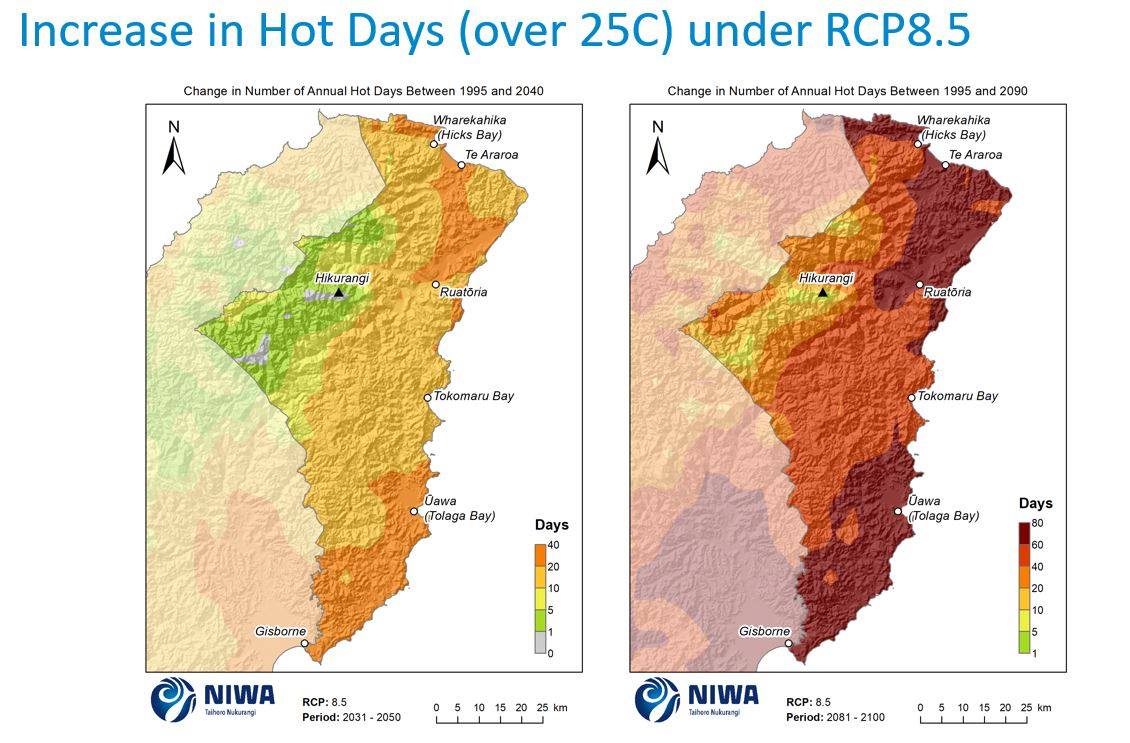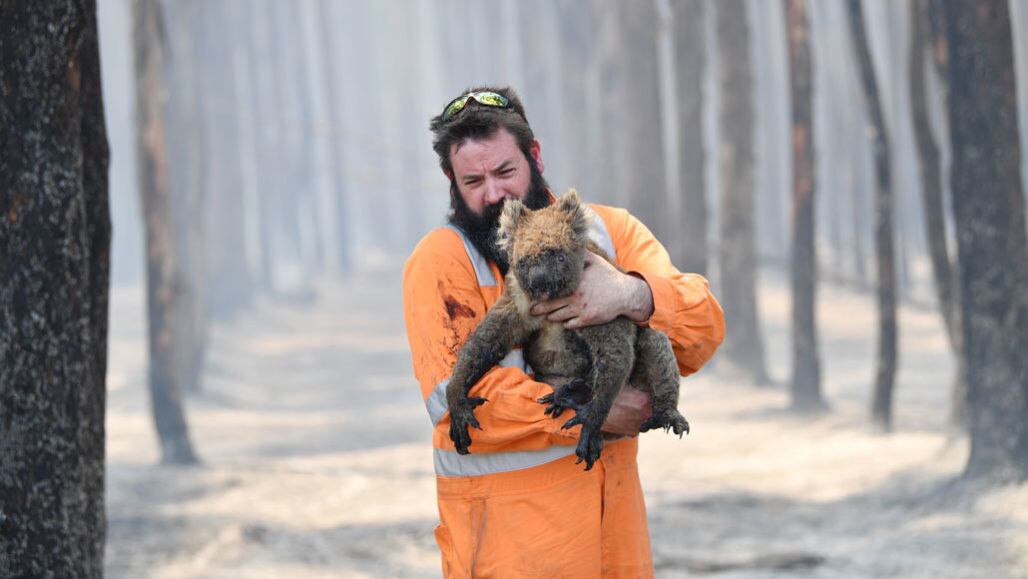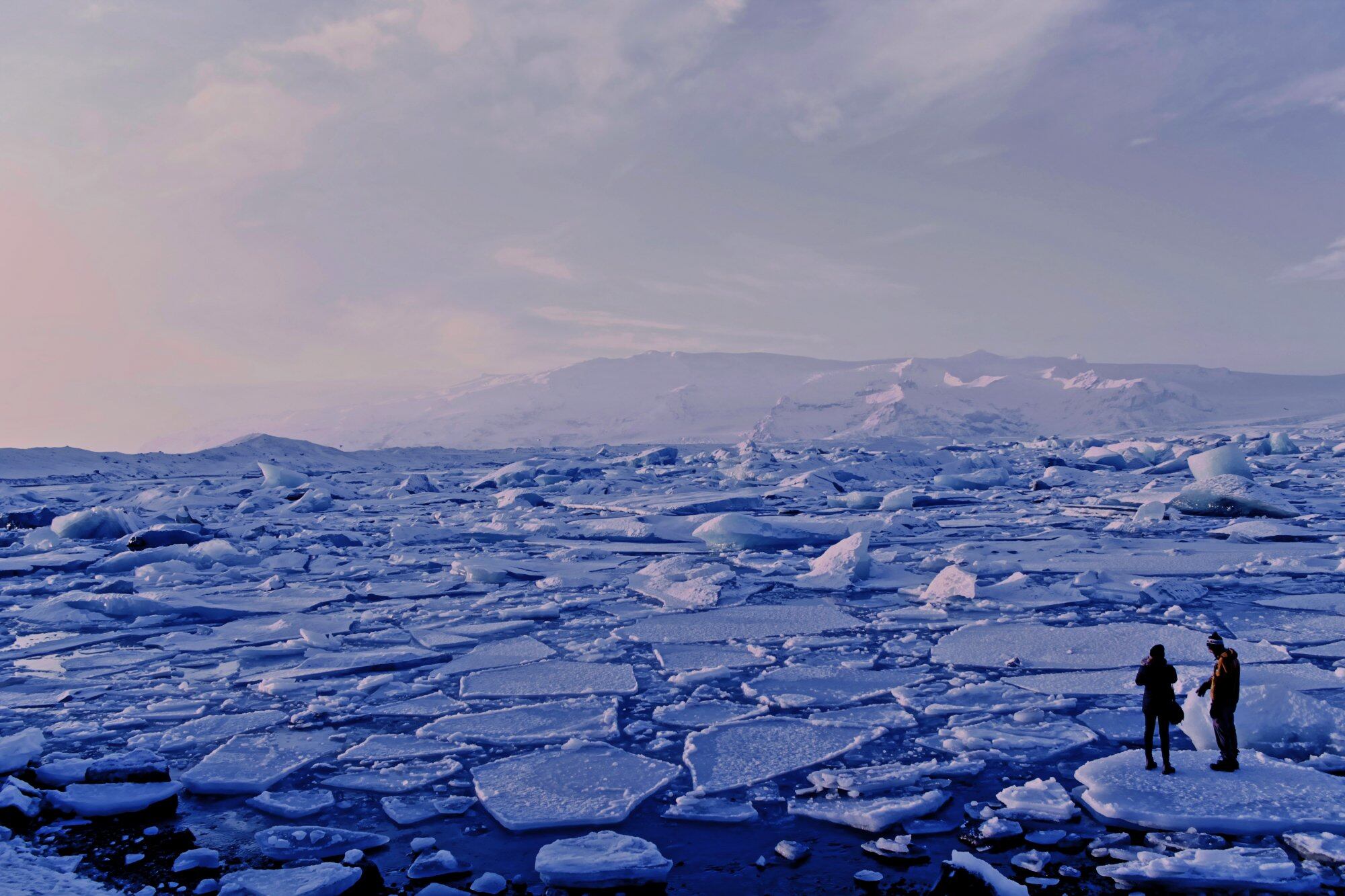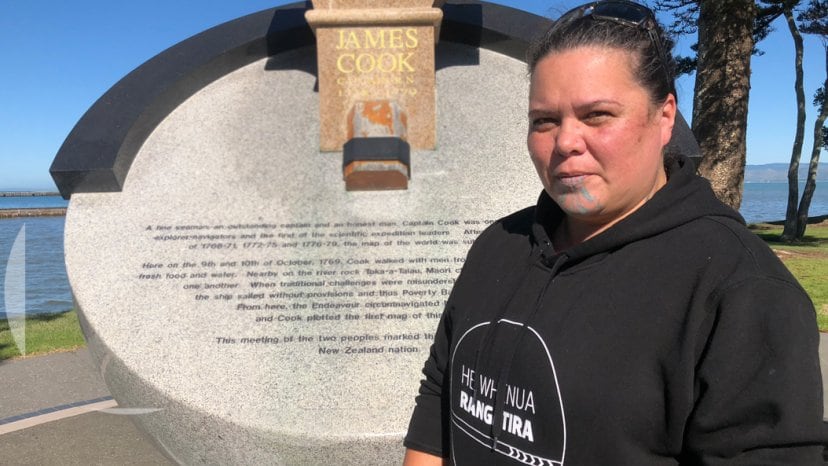Photo / File
The Tairawhiti Region face the worst possible scenario in climate change, could escalate from 1-5 hot days a year to 80 by the end of the century.
To address the issues impacting on the region’s taiao is the Tairawhiti Climate Summit that draws its conclusions from experts attending the kaupapa held at Te Tini o Porou in Turanga Nui a Kiwa today.

East Coast Map from 1995 to 2090. Photo / NIWA
This hui will host a panel of key speakers from across the globe to project ‘climate futures’ in models based on the National Institute for Water and Atmospheric Research (NIWA).
Maori environmentalist and organizer Tina Ngata fears the safety of future Tairawhiti mokopuna. It is forecast by NIWA climate change will have major impacts on the ecosystem, human health and the economy.
“I knew there would be changes but I didn’t realise they would be that severe”, she says.
Australian bushfires. Photo / File
A huge wake-up call was by far the Australian bushfires that ravaged 7.3 million hectares (17.9 million acres) across its six states – an area that is much bigger than 50 New York cities. 28 people died nationwide, with 3000 plus homes damaged or destroyed.
But one of the biggest threats when certain parts of Australia went into a state of emergency, was the killing of half a billion animals which included birds, reptiles, and mammals, except bats.

Photo / file
The koala, a national symbol was almost wiped out in the state of NSW and a third of their habitat gone.
According to the Global Fire Emissions Database, the bushfires may have contributed 900 million metric tons of carbon emissions.

Wikimedia / Source
A climate action is on the cards in this decade to avoid future problems in Tairawhiti.
“A lot of what we hear on the news about climate change relates to the polar caps, or the Amazon, or at the moment, Australia – but this summit will help us to make sense of what climate change will mean for our own fire risk, for our seafood stocks, for our rivers.”

Tina Ngata. Photo / File
Ngata also explains the best way forward is having a “zero emissions economy” to be carbon neutral and resilient to climate changes by 2050.
Now the Gisborne District Council and Trust Tairawhiti see the need to support whanau by having a regional emissions profile and reduction plan.
Climate Commissioner James Renwick and expert on climate change and human health, Rhys Jones will take part in the panel discussions.
Issues revolving around freshwater, wetland and coastal marine impacts; economic futures; biodiversity and biosecurity are some of the arguments to lead the hui.
